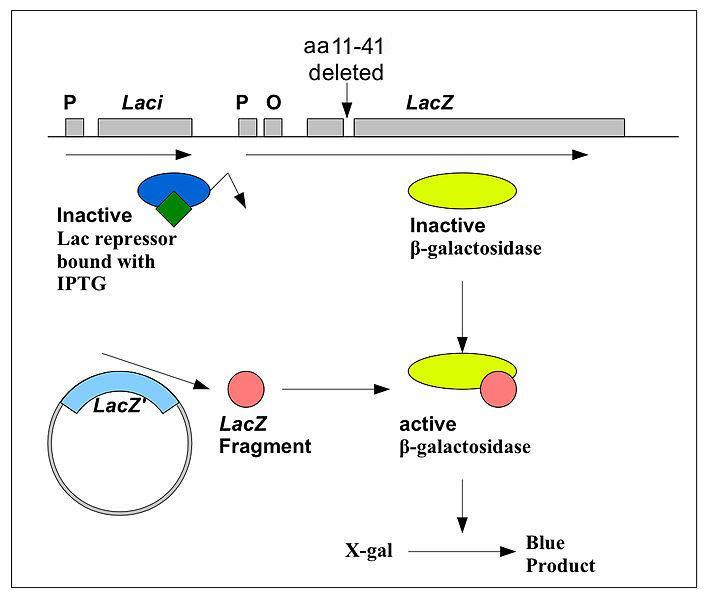
What is the cap site for the Lac Operon?
Answer
407.4k+ views
Hint: In E. coli and other enteric bacteria, the lactose operon (lac operon) is necessary for lactose transport and metabolism. Although most bacteria prefer glucose as a carbon source, the lac operon uses beta-galactosidase to digest lactose when glucose is unavailable. Lac operon gene regulation was the first genetic regulatory mechanism to be properly described, and it has since become a model for prokaryotic gene regulation.
Complete answer:
The lac operon in E. coli contains lactose metabolism genes. It is expressed when lactose and glucose are both present. Lac repressor and catabolite activator protein (CAP) are two regulators that turn on and off the operon in response to lactose and glucose levels. Catabolite activator protein (CAP) binds to the CAP binding site, which is a positive regulatory site.
When CAP binds to this location, it aids RNA polymerase in binding to the promoter, which stimulates transcription. CAP interacts with a stretch of DNA immediately before the lac operon promoter, assisting RNA polymerase in binding to the promoter and promoting high transcription levels.
CAP isn’t constantly operational (able to bind DNA). Instead, cyclic AMP (cAMP), a tiny molecule, regulates it. When glucose levels are low, E. coli produces cAMP as a “hunger signal.” cAMP binds to CAP, causing it to change shape and become capable of binding DNA and promoting transcription. CAP cannot bind DNA without cAMP and is therefore inactive.

Note:
The lac genes are controlled differently depending on whether the bacterium has access to the lactose substrate. When lactose is not available as a carbon source, the bacterium does not generate proteins. Lac genes are arranged in an operon, which means they are orientated in the same way on the chromosome and co-transcribed into a single polycistronic mRNA molecule.
Complete answer:
The lac operon in E. coli contains lactose metabolism genes. It is expressed when lactose and glucose are both present. Lac repressor and catabolite activator protein (CAP) are two regulators that turn on and off the operon in response to lactose and glucose levels. Catabolite activator protein (CAP) binds to the CAP binding site, which is a positive regulatory site.
When CAP binds to this location, it aids RNA polymerase in binding to the promoter, which stimulates transcription. CAP interacts with a stretch of DNA immediately before the lac operon promoter, assisting RNA polymerase in binding to the promoter and promoting high transcription levels.
CAP isn’t constantly operational (able to bind DNA). Instead, cyclic AMP (cAMP), a tiny molecule, regulates it. When glucose levels are low, E. coli produces cAMP as a “hunger signal.” cAMP binds to CAP, causing it to change shape and become capable of binding DNA and promoting transcription. CAP cannot bind DNA without cAMP and is therefore inactive.

Note:
The lac genes are controlled differently depending on whether the bacterium has access to the lactose substrate. When lactose is not available as a carbon source, the bacterium does not generate proteins. Lac genes are arranged in an operon, which means they are orientated in the same way on the chromosome and co-transcribed into a single polycistronic mRNA molecule.
Latest Vedantu courses for you
Grade 11 Science PCM | CBSE | SCHOOL | English
CBSE (2025-26)
School Full course for CBSE students
₹41,848 per year
Recently Updated Pages
Master Class 11 Computer Science: Engaging Questions & Answers for Success

Master Class 11 Accountancy: Engaging Questions & Answers for Success

Master Class 11 Physics: Engaging Questions & Answers for Success

Master Class 11 Business Studies: Engaging Questions & Answers for Success

Master Class 11 Maths: Engaging Questions & Answers for Success

Master Class 11 Chemistry: Engaging Questions & Answers for Success

Trending doubts
How much is 23 kg in pounds class 11 chemistry CBSE

What was the first capital of Magadha APatliputra BVaishali class 11 social science CBSE

How does Amoeba obtain its food a Endocytosis b Exocytosis class 11 biology ICSE

What is the molecular weight of NaOH class 11 chemistry CBSE

What is food class 11 biology CBSE

Write the differences between monocot plants and dicot class 11 biology CBSE




